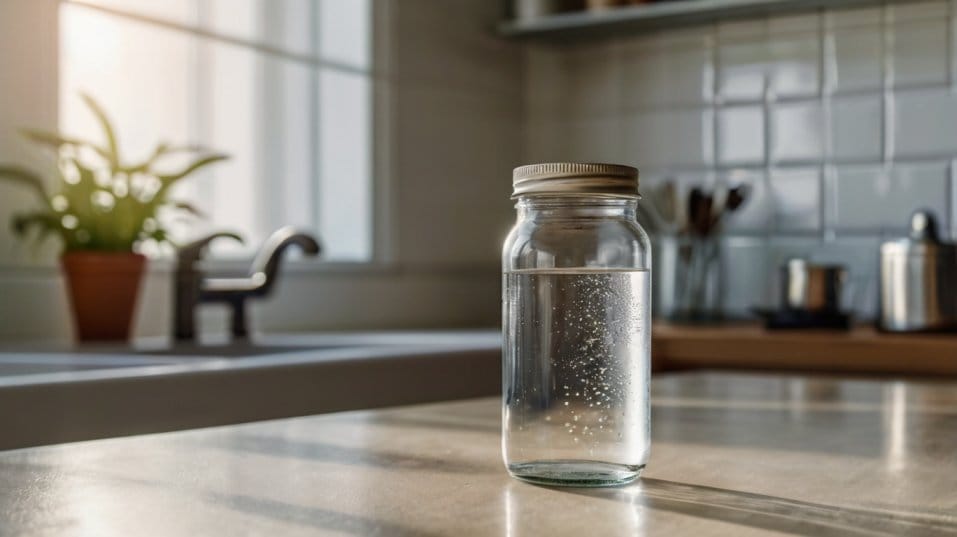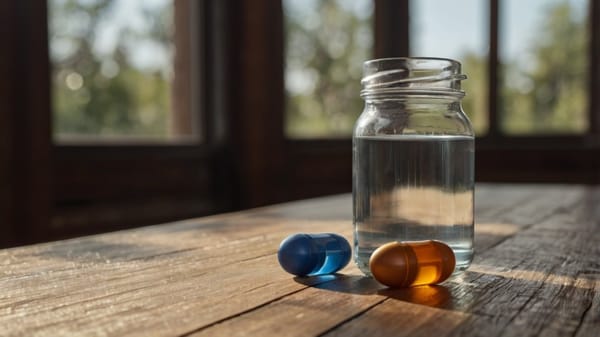When’s the Best Time to Take Probiotics? Here’s the Answer
Take probiotics at the right time for real results—better digestion, energy, and mental clarity start with this one simple timing shift.

Ever wonder why your probiotic isn’t doing much? You’re not alone. A lot of people try them and feel... nothing. The secret? It’s not just what you take—it’s when.
Probiotics are living organisms, and timing decides whether they thrive or die. Take them at the wrong moment, and they never make it to your gut.
Let’s break down exactly when to take your probiotic for real, noticeable results—without overthinking it.
First: Why Timing Matters (It’s Not Optional)
Here’s what most people miss: probiotics are living organisms. You’re not just taking a pill—you’re sending reinforcements to your gut. And like any good army, they need the right conditions to survive the trip and take hold.
The problem? Your stomach acid. It’s designed to break down everything that passes through it, and that includes your probiotic.
Here’s the fix: Take your probiotic when your stomach acid is at its lowest—typically first thing in the morning before you eat, or right before bed after your last meal has digested.
That way, more of those good bacteria survive, make it to your gut, and start working their magic.

Best Times to Take Probiotics
Let’s simplify:
- Morning (Best Choice): Take it 30–60 minutes before breakfast, with a glass of water. This gives your gut a head start before food enters the picture. Your stomach is less acidic, and the probiotic can pass through with less resistance.
- Before Bed (Strong Second): If mornings aren’t your thing, take it 2–3 hours after dinner. Your digestive system slows down at night, giving the bacteria a calmer environment to settle in and multiply.
The worst time? With or right after a heavy meal. That’s when your stomach acid spikes, and that acid is ruthless. You’re not giving your probiotics a fighting chance.
How Long Before You Feel Anything?
You’re not popping a probiotic and waking up with a six-pack. But you should start noticing subtle wins within 1–2 weeks:
- Less bloating after meals
- More regular bathroom habits
- Lighter, clearer mental energy
- A calmer, flatter gut throughout the day
Stay consistent, and within 30 days, your gut will start functioning like it’s got its act together. The real key here? Daily use. One pill. One routine. That’s it.
Should You Take Probiotics With Food? Depends on the Formula
Some high-end probiotics are encapsulated to resist stomach acid, so technically they can be taken with or without food. But unless your label says that specifically, stick with empty-stomach dosing.
Still unsure? Go by how you feel. If you get a little gurgly on an empty stomach, try taking it 15 minutes before a small snack. Comfort matters more than perfection.
Can You Take Probiotics With Other Supplements?
Definitely—but a little planning helps.
- Good to pair:
- Magnesium (sleep, stress, digestion)
- Collagen (gut lining support)
- Digestive enzymes (right before meals)
- Vitamin D (supports the immune benefits of probiotics)
- Space out from:
- Antimicrobials like oregano oil, berberine, or garlic extract. These can kill off good bacteria alongside bad ones. Give at least a 2-hour gap.
- High-dose zinc or iron. These can be tough on the stomach and might interfere with absorption.
Bottom line: Probiotics are easy to stack as long as you’re not downing them with bacterial enemies.
What About the Strains? (Don’t Overthink It)
The internet will tell you strain X is for weight loss, strain Y is for anxiety, and strain Z is for skin. Sure, there’s some science there—but if you’re just starting out, don’t get caught in the weeds.
For total gut support, look for a broad-spectrum probiotic with at least:
- Lactobacillus strains (like L. acidophilus, L. rhamnosus)
- Bifidobacterium strains (like B. longum, B. bifidum)
These are the real workhorses. They help break down food, strengthen your gut lining, support immunity, and calm inflammation.
And don’t worry about CFUs (colony-forming units). More isn’t always better. Focus on quality, survivability, and consistency. The brand matters more than the number.
Want to Supercharge the Effects? Feed Your Probiotics
Probiotics are like pets—they’re only as good as what you feed them.
Add prebiotics to your routine to help the good bacteria thrive. These are fibers your body can’t digest, but your gut bugs love them.
Simple options:
- Greens powders (with inulin or chicory root)
- Psyllium husk (start slow)
- Cooked-and-cooled potatoes or rice (resistant starch)
- Oats, bananas, onions, garlic (bonus if raw)
You don’t have to go full nutritionist. Just sneak in a little fiber and your probiotics will stick around longer—and work harder.
Final Thoughts: This Isn’t Complicated—Just Powerful
If your gut’s been running on fumes, probiotics can flip the switch. More energy, better digestion, a clearer mind—it all starts with restoring balance where it matters most.
Take it once a day, empty stomach. Stick with it. Feed it well. That’s your whole playbook. No guesswork. No crazy routines. Just one small action that sets up your day—and your gut—for success.
Start now. Pick a probiotic, take it tomorrow morning, and don’t stop. Your gut’s waiting for backup—send it in.




